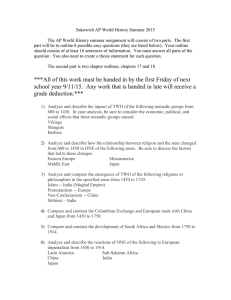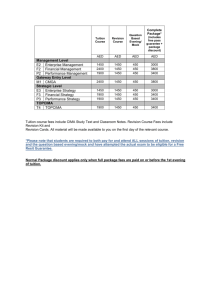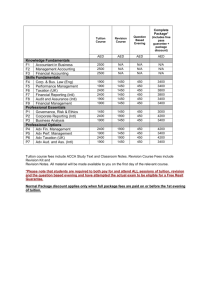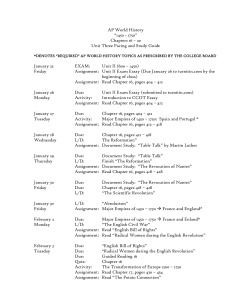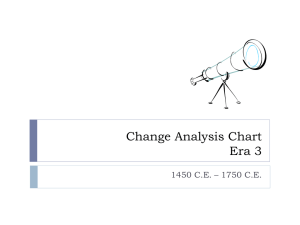Africa: 600 * 1450 CE Definitions
advertisement
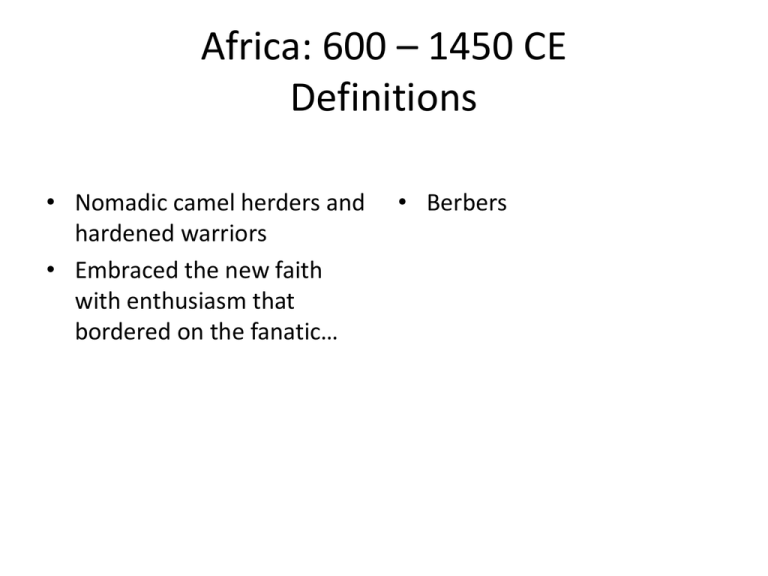
Africa: 600 – 1450 CE Definitions • Nomadic camel herders and hardened warriors • Embraced the new faith with enthusiasm that bordered on the fanatic… • Berbers Africa: 600 – 1450 CE Definitions • Powerful state between 800s – 1000, thanks to large gold deposit an its prominent role in transSaharan trade. • Welcomed Muslim traders, but it didn’t officially convert which triggered a Berber invasion. • Was a gold-trading state until 1200s… Africa: 600 – 1450 CE Definitions • 1200s – 1600s, part of the Niger River basin. • Was part of an important North-South trade route • Blessed with deposits of gold and other metals • Also traded salt, ivory, animal skins and slaves • Emerged as a key point in the trans-Sahara network • Founded by Sundiata… Africa: 600 – 1450 CE Definitions Timbuktu • Chief commercial and cultural hub/city of Mali • Resting place for caravans • Renowned center for Islamic scholarship – home to mosques and madrasas… The Mosque of Sankore Africa: 600 – 1450 CE Definitions • Mali’s most powerful ruler from 1312 – 1337 • Devout Muslim • Gained fame throughout Africa and Europe as one of the world’s wealthiest monarchs • Caused an international sensation when he made his pilgrimage to Mecca… • Mansa Musa Africa: 600 – 1450 CE Definitions • One of the 5 pillars of Islam • All faithful who are able are expected to visit the holy city of Mecca a least once in their lifetime… •Hajj Africa: 600 – 1450 CE Definitions • Thrived on the East coast of Africa • Flourished between 1000 – 1500 • Nearly 40 autonomous urban centers were sprinkled along 1500 miles of coastline • All heavily involved in the Indian Ocean network • All were multi-ethnic w/Persians and Arabs migrating with the local Africans and migrants from India and SE Asia • Heavy Islamic presence… Africa: 600 – 1450 CE Definitions • Key port cities along the East African coast… • Mogadishu, Mombasa, Zanibar Africa: 600 – 1450 CE Definitions Malaria • Insect borne disease that was obstacle to population growth • Carried by mosquito which transmits deadly parasites • High fever fevers, shaking chills, flu-like symptoms, anemia, death… Africa: 600 – 1450 CE Definitions Sleeping Sickness • Insect borne disease that was obstacle to population growth • Carried by tsetse fly which transmits deadly parasites • Near water in sub Sahara Africa • Can kill livestock and humans • Made infected areas unsuitable for settlement… • • • The infection attacks the central nervous system, causing severe neurological disorders. Without treatment the disease is fatal. The first stage of sleeping sickness presents with non-specific symptoms such as fever, headache, weakness, itching, and joint pain. At this stage, sleeping sickness is easy to treat but difficult to diagnose. If no treatment is given, the parasite will invade the infected person’s central nervous system and the second stage sets in. The second stage may be characterized by more specific symptoms, such as confusion, violent behavior or convulsions. Named after one of its most striking symptoms, patients with sleeping sickness experience an inability to sleep during the night but are often overcome by sleep during the day. *see You Tube • Death by Tsetse Fly • By Animal Planet
